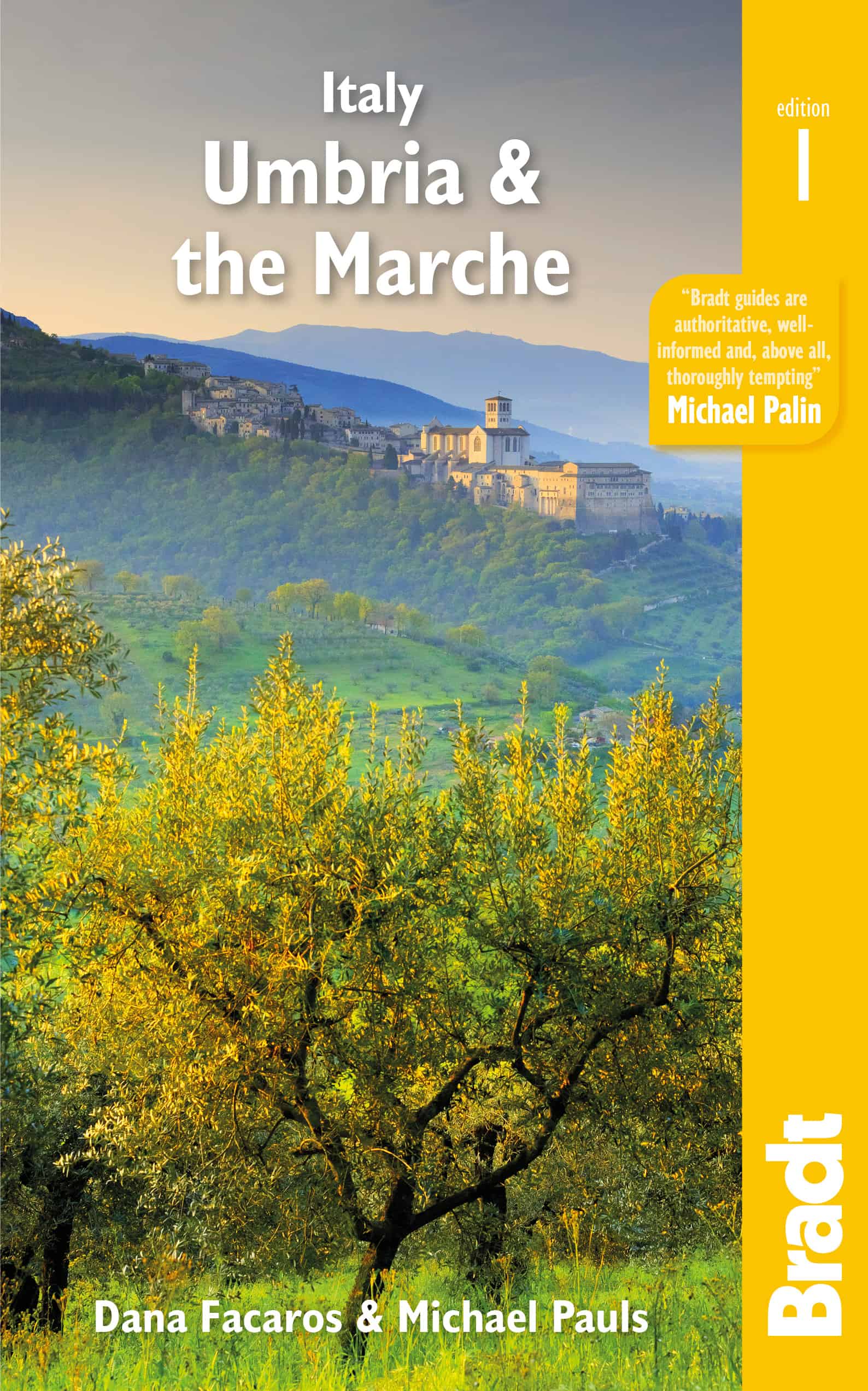Balanced on a commanding hill high over the Tiber valley, Perugia adroitly juggles several roles: that of an ancient hill town, a magnificent città d’arte, a university centre and a slick cosmopolitan city. It is a fascinating place and a fitting capital for Umbria.
Splendid monuments from the Etruscan era to the Late Renaissance stand cheek to jowl; its gallery contains the region’s finest art; and its ancient alleyways are a joy to explore on foot. To help you plan your visit, here are our highlights of what to do in Perugia:
Piazza IV Novembre
Magnificent, time-worn Piazza IV Novembre, once the setting for countless riots and street battles, remains the heart and soul of Perugia. As in many Umbrian cities, the old town hall, symbol of the comune, entirely upstages the cathedral, but here, the two stare at each other over Italy’s most beautiful medieval fountain, the 25-sided polygonal pink and white Fontana Maggiore, designed in the 1270s by Fra Bevignate.
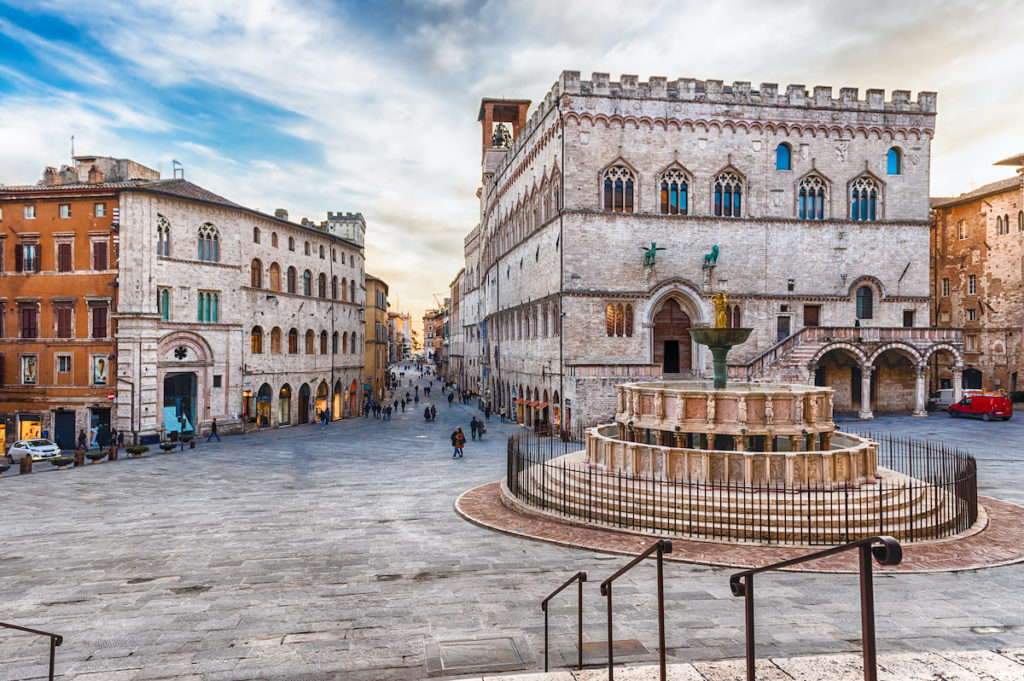
The occasion was the construction of Perugia’s first aqueduct since Roman times, and the Priors commissioned the top chisel-masters of the day, Nicola Pisano and his son Giovanni to sculpt the 48 double relief-panels around the lower basin. Twelve portray the Labours of the Months, each accompanied by its zodiacal sign; in between are scenes from Roman legend, Aesop’s fables, and saints’ lives, personifications of the sciences and arts – altogether a complete, circular image of the medieval world.
The upper basin has concave panels filled with 24 saints and figures from Perugia’s history, with three water nymphs to keep them company. The more you look, the more you realise the subtlety and dynamism of Fra Bevignate’s design, particularly the way in which the panels of the lower basin are never congruent, but pull the eye along.
Cattedrale di San Lorenzo
The Perugians never seemed very interested in their cathedral. After laying the cornerstone in 1345, they didn’t add another stone for a decade. A century later, when the building was substantially completed, a papal legate tore part of it down to use the stone for his own palace. For the façade, they stole half a marble facing destined for the cathedral at Arezzo, but not long after the Aretini whipped them in battle and made them give it back.
Cattedrale di San Lorenzo’s finest hour, perhaps, was in 1488, when the Baglioni, fighting the Oddi, turned it into a fortress, complete with cannon protruding from its Gothic windows. So much blood was spilled that the cathedral had to be washed out with wine and reconsecrated.
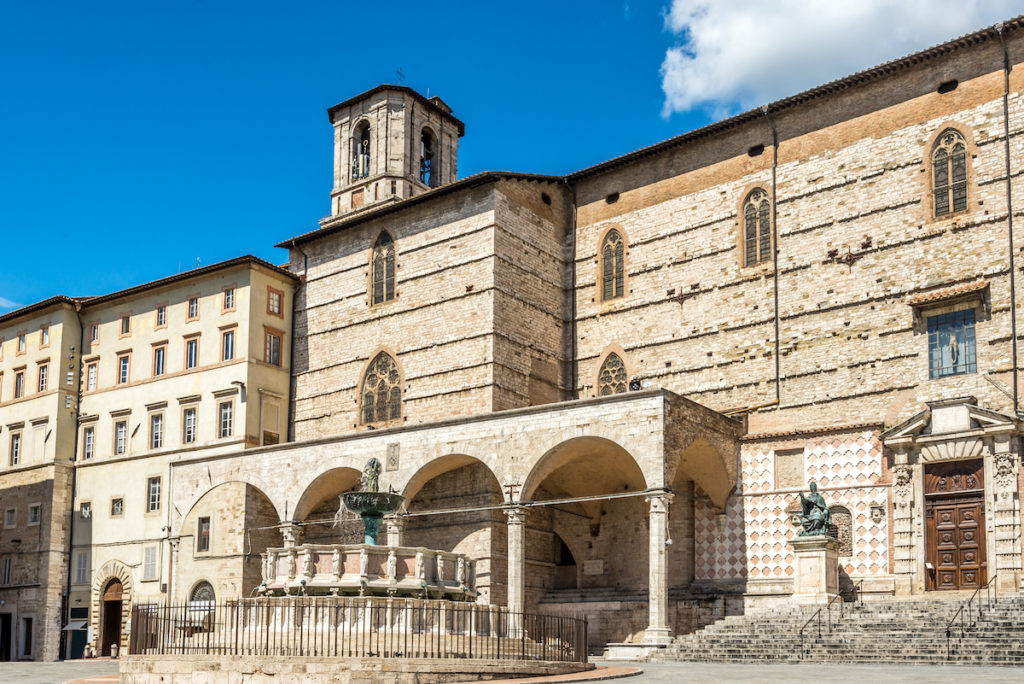
Even so, this prim old dear of a building seems just right for lovely Piazza IV Novembre. The side facing the Fontana Maggiore has a geometrical pattern, employing the warm pink marble quarried near Assisi that is everywhere in Umbria. Next to it a bronze statue commemorates the pleasure-loving Julius III, the only pope the Perugians ever liked.
The unfinished pulpit on the façade was built for the charismatic San Bernardino of Siena, who preached to vast crowds in the piazza, finally persuading them to stop at least the Battaglia de’ Sassi in 1425; Perugia, he claimed, was his favourite town and, judging by the church the Perugians gave him, he was their favourite saint. The best feature of the façade, however, is the elegant travertine Loggia di Braccio Fortebraccio, added by the condottiero in 1423.
Galleria Nazionale dell’Umbria
Inside the elaborate portal of the Palazzo dei Priori, protected by statues of Perugia’s patron saints, Louis of Toulouse, Lawrence and Ercolanus, waits one of the finest, largest collections of Umbrian (and many other) paintings anywhere.
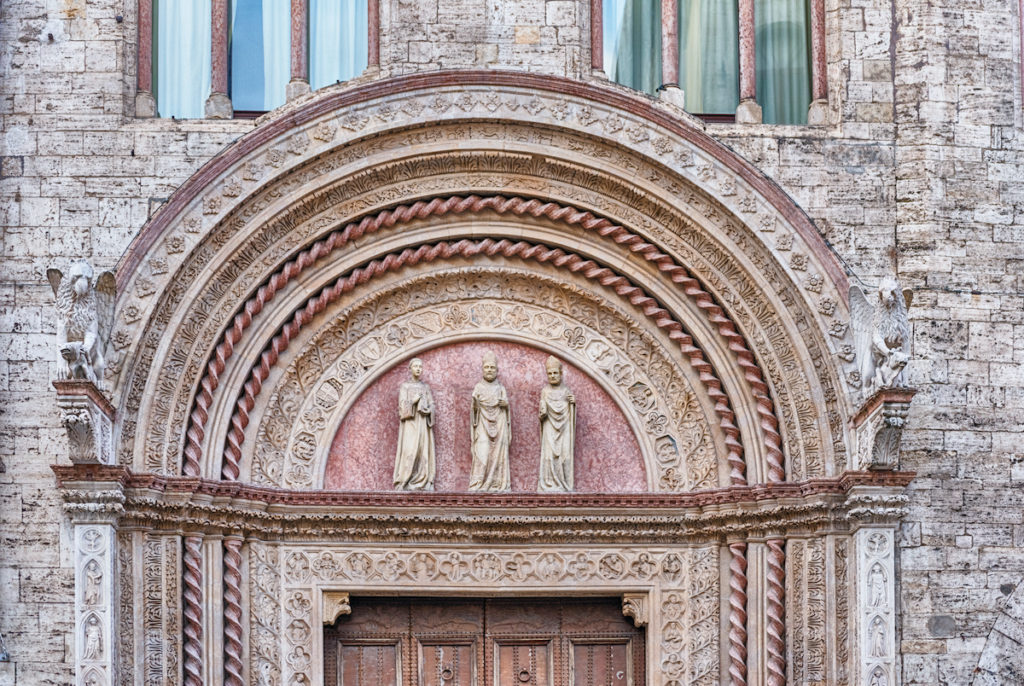
Among the most striking early works are sculptures for a public fountain by Arnolfo di Cambio (1281) and the originals from the Fontana Maggiore by Nicola and Giovanni Pisano, and a pre-Giotto Crucifixion (1270s) by the Maestro di San Francesco.
The Sienese are well represented, with a fine polyptych by Vigoroso da Siena (circa. 1290) and a sweet Madonna by Duccio di Buoninsegna, and two gems by Taddeo di Bartolo, including a Descent of the Holy Ghost, where one of the Apostles grimaces from the heat of the Holy Spirit on top of his head.
Mesmerising rooms of trecento and early quattrocento Madonnas and Annunciations (by Ambrogio Maitani, Meo di Guido da Siena, Ottaviano Nelli, Puccio Capanna) culminate in Fra Angelico’s beautiful, tender Guidalotti Polyptych, his pupil Benozzo Gozzoli’s Pala della Sapienza Nuova and Piero della Francesca’s Pala di Sant’Antonio (1465–70).
Underground Perugia
The labyrinthine Underground Perugia is utterly compelling. The first escalator takes you to the medieval street level, among the palaces of the Baglioni, all roofed over by Sangallo’s arches and vaults. Stretches of the Rocca Paolina bastions survive, where you can peek through the pope’s gun slits over the Viale Indipendenza below. There are permanent works of art to seek out in the maze – among them an enormous rearing horse, Alberto Burri’s Grand Nero and temporary exhibitions in the Sala del Caminetto.
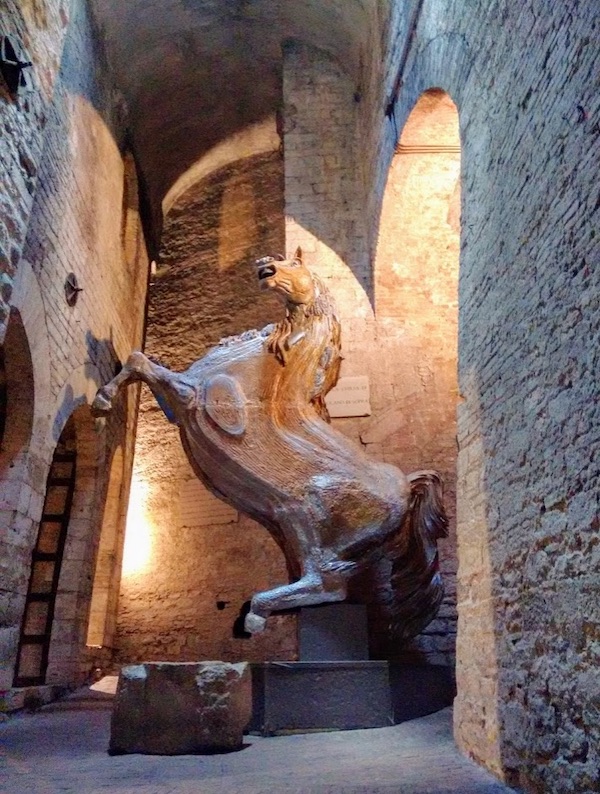
The entrance to the bastions from the outside is on Via Marzia, where the Porta Marzia is the best surviving piece of Etruscan architecture anywhere that isn’t a tomb. Antonio da Sangallo was so impressed with it that he carefully reassembled it here after destroying the original walls. The five sculpted panels, now eroded, probably represented five gods, although the Perugians have a strange old story that they are a Roman family who died from eating poisonous mushrooms.
Basilica di San Domenico
A colossal, woefully unfinished church, Perugia’s Dominican church was designed by Giovanni Pisano, then rebuilt in 1632 by Carlo Maderno after the vaulting caved in, although the one surviving apse has the second largest stained-glass window in Italy after Milan cathedral, dated 1411.
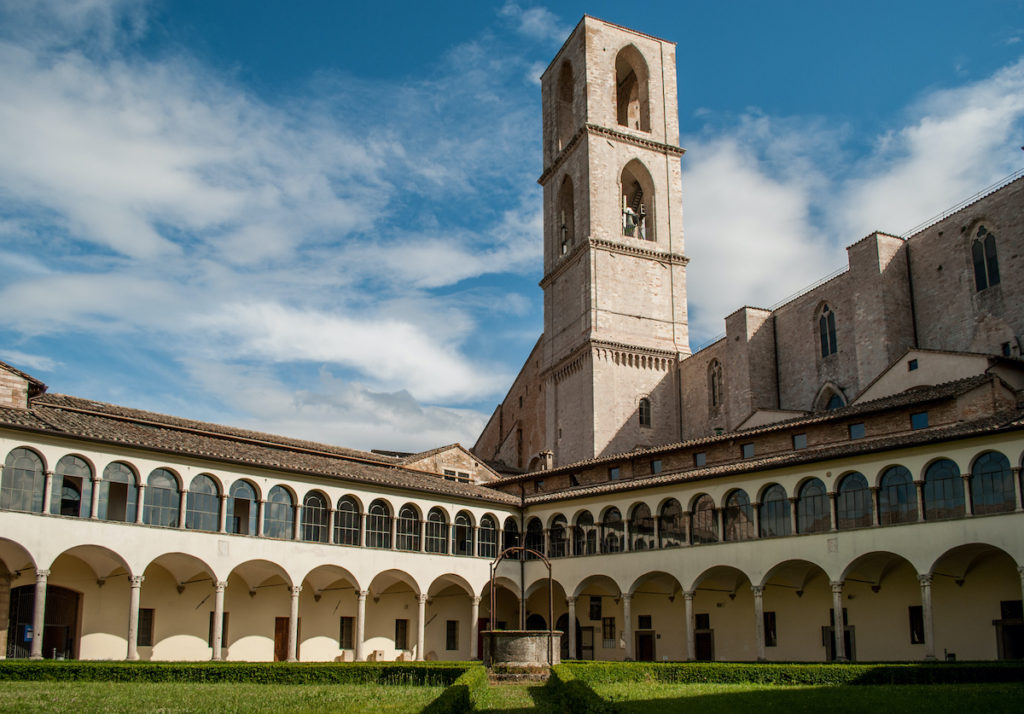
The light streaming through the glass is the main feature of the interior, but there is also the fine Tomb of Pope Benedict XI by a student of Arnolfo di Cambio. Poison did for Benedict during a visit in 1304, but, surprisingly, the Perugians had nothing to do with it; prime suspects behind the nun who served him the fatal figs included the Florentines and King Philip the Fair of France.
Basilica di San Pietro
Nearly every square inch of this 10th-century Benedictine church is covered with frescoes and canvases. The Perugians have always taken good care of it – especially since 1859, when, during the sack by the Swiss Guards, the monks shielded the leaders of the revolt from the papal bloodhounds, then cut down their bell-ropes by night, and used them to lower the fugitives down the cliffs to safety.
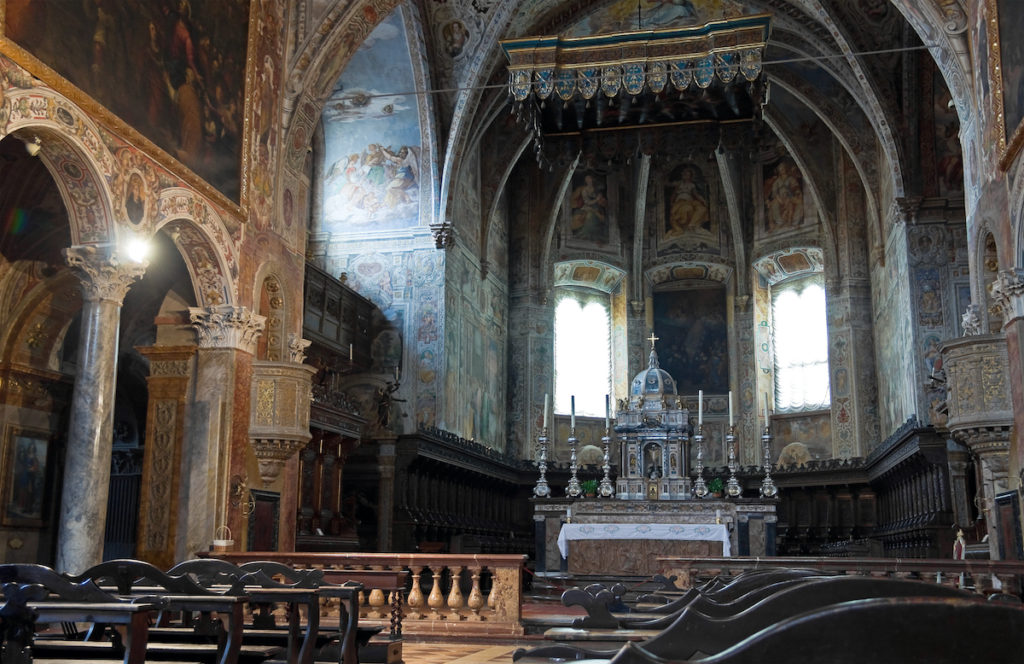
The distinctive 12-sided bell tower is one of Perugia’s landmarks. The façade has a rare fresco of the Trinity, which is a feminine word in Italian and here represented by a three-headed woman. The interior, remodelled in the early 1500s, has a carved, gilded ceiling. The best works in the whole church are the choir stalls from the 1520s, sculpted and inlaid by Bernardino Antonibi of Perugia, Nicola di Stefano of Bologna and Stefano Zambelli of Bergamo. A pretty door in the choir gives on to a balcony with views over Assisi and Spello.
Church of Sant’Agostino
The bulky pink-and-white checked church of Sant’Agostino houses a set of intarsia choir stalls designed by Perugino and executed by Baccio d’Agnolo of Florence, and there are frescoes by Gionnicola di Paolo, Perugino’s student. The great altarpiece by Perugino himself was looted by Napoleon; the panels still in Perugia, pieced together, are in the National Gallery.
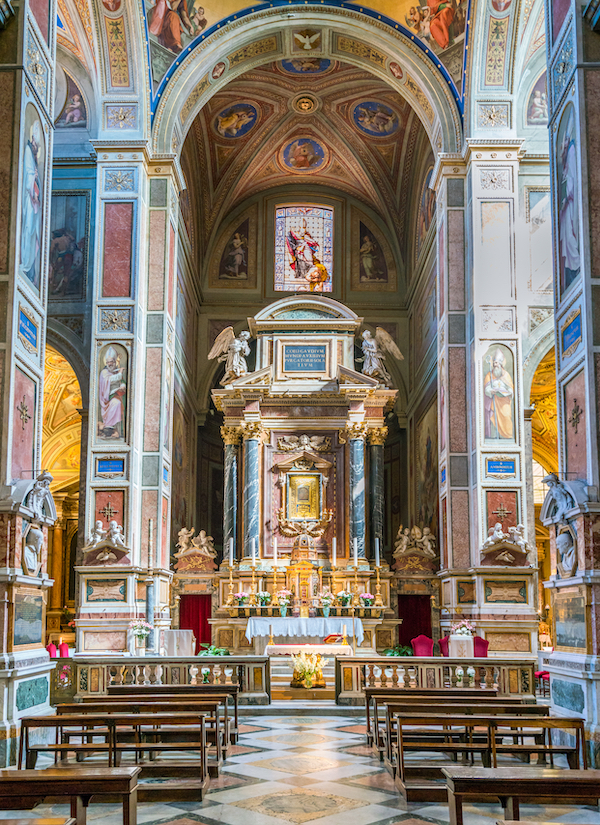
The adjacent Oratorio di Sant’Agostino has two levels; the hospice on the ground floor has excellent 14th–16th century frescoes, including a Crucifixion once attributed to Raphael, while the upper floor is lavishly Baroque.
Tempio di San Michele Arcangelo
At one of the highest points in the city, sits the Tempio di San Michele Arcangelo. This spot was graced in ancient times by a circular temple, dedicated to Venus or Vulcan. When it was converted into a church, in the 5th or 6th century, the plan survived, although some of the 16 Corinthian columns were undoubtedly brought from other buildings.
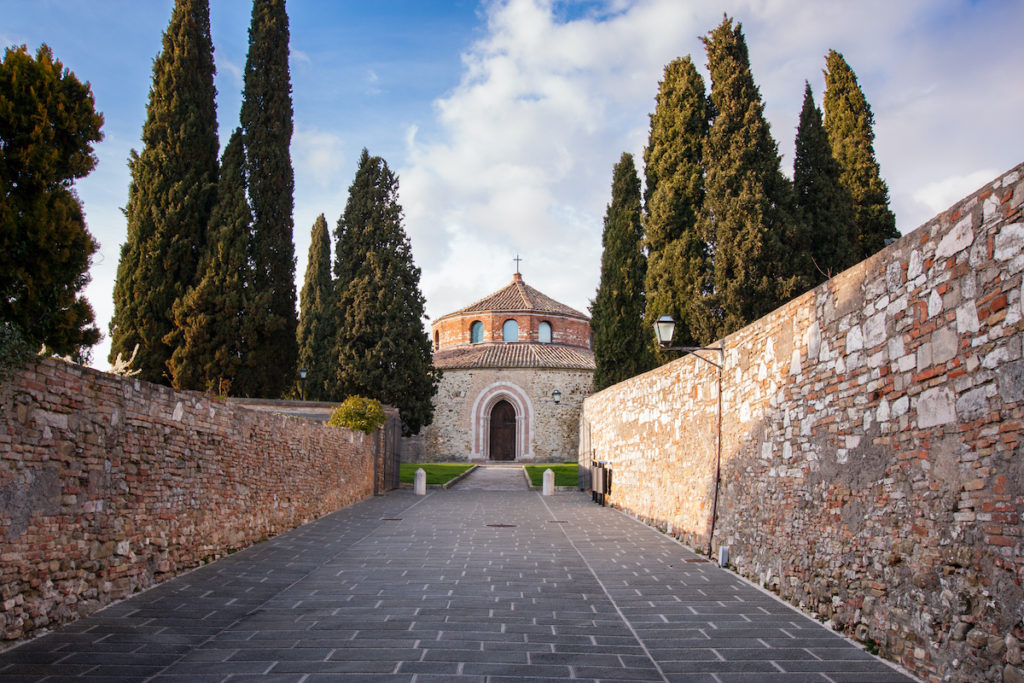
Dedicated to St Michael, the ‘generalissimo’ of the heavenly host, this was probably the church of the Byzantine militia stationed in Perugia. Many legends grew up around this singular building – some writers referred to it as the ‘pavilion of Roland’. Still, Umbria’s oldest church casts its quiet spell, especially in the early hours when the sunlight streams through the 12 windows of the crowning drum; it’s often used for traditional Latin Masses.
More information on what to do in Perugia
Start planning your visit to Umbria and The Marche and read more on what to do in Perugia with Dana and Michael’s comprehensive guide:
